Cloudy with Particles
Backyard Scientists
In high school, I teamed up with my best friend to build a cloud chamber – a type of particle detector first invented by Scottish physicist Charles Wilson. A cloud chamber visualizes the paths of ionizing radiation, allowing one to "see" the invisible particles that are all over the place!
How Does a Cloud Chamber Work?
The essential point of a cloud chamber is to create a supersaturated vapor. Vapors in air have a dew point at which they condense onto dust and nearby surfaces (like dew condensing on grass). Supersaturation occurs when the dew point is above the temperature of the gas, allowing vapors to spontaneously condense around ions created by the high-energy particles. Ionizing radiation interacts with the gas, creating ions that act as condensation nuclei. This effect can be amplified by applying an electric field, preventing ions from neutralizing too quickly and ensuring longer visibility of the trails. To generate the high-voltage electric field, we used a nylon fleece sweatshirt and created static electricity by rubbing our hands together. We chose isopropyl alcohol as our medium. Alcohol is a better medium than water for this process due to its lower freezing point and higher volatility, allowing it to remain in vapor form at lower temperatures.
There are different cooling methods for cloud chambers. One can use adiabatic expansion to create temporary cooling by lowering the pressure ... but I highly doubt two high-school students could pull that off. Another popular method is using dry ice to supercool the vapors. While effective, it is a similarly unobtainable resource that is one-time use only. Finally, there is the option of using Peltier thermoelectric modules, which allow for an electrically powered, reusable cooling system.
Our Design: Reusable with a Peltier Module
Our chamber was built using a Peltier module for cooling. These modules, which utilize semiconductor pairs, can achieve a significant temperature difference between their hot and cold sides. Up to 70°C. They do this by moving electrons (specifically electron holes, but I do not want to get into details here). By managing the heat on the hot side with a beefy cooler, the cold side drops exactly by the temperature difference. The easiest way is to slap the bad boy onto a large computer heatsink and thermally insulate around it to prevent condensation as the cold side target temperature is way below freezing. In our experimental trails, using an air-cooled heatsink the overall heat dissipation was not high enough. By submerging the heatsink fins in freezing water (a homemade water-cooling system), we achieved temperatures as low as -23°C, low enough for creating clear particle trails.
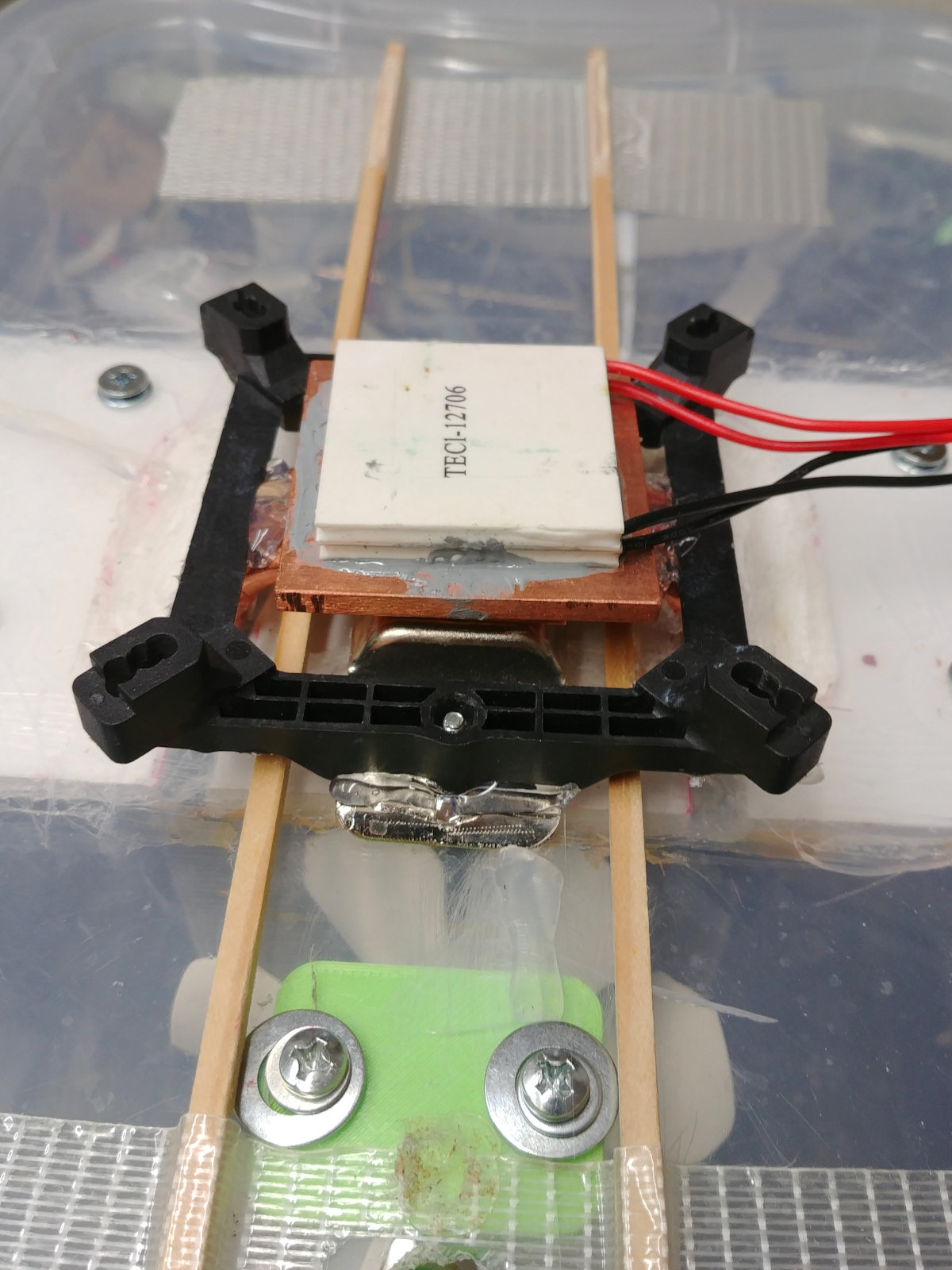
Cascade of Peltier modules, the top one is a TEC-12706 and the bottom one is a TEC-12710
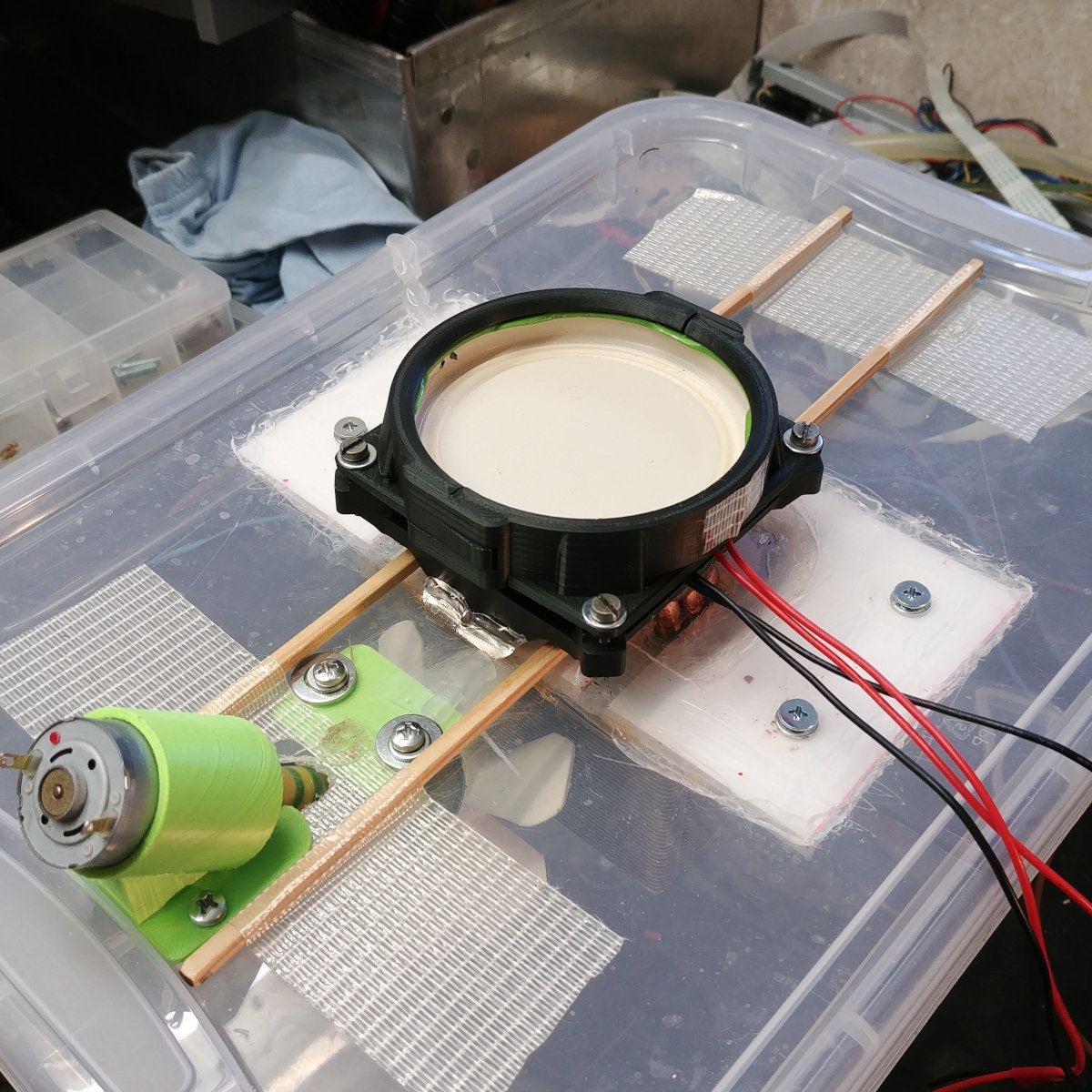
Lower plate and an improvised cooling system in place
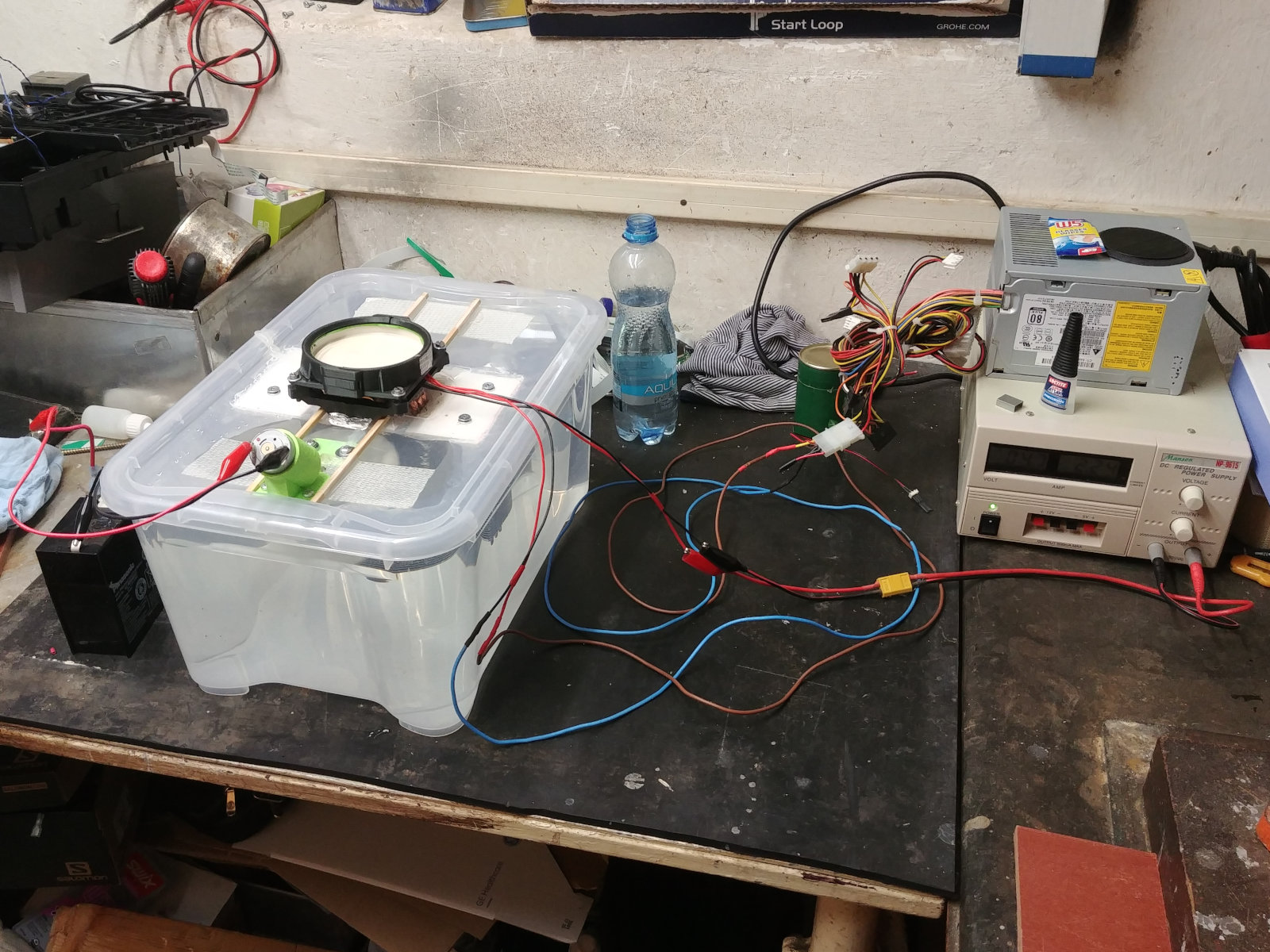
Jerry-rigged setup powered by a all sorts of power supplies
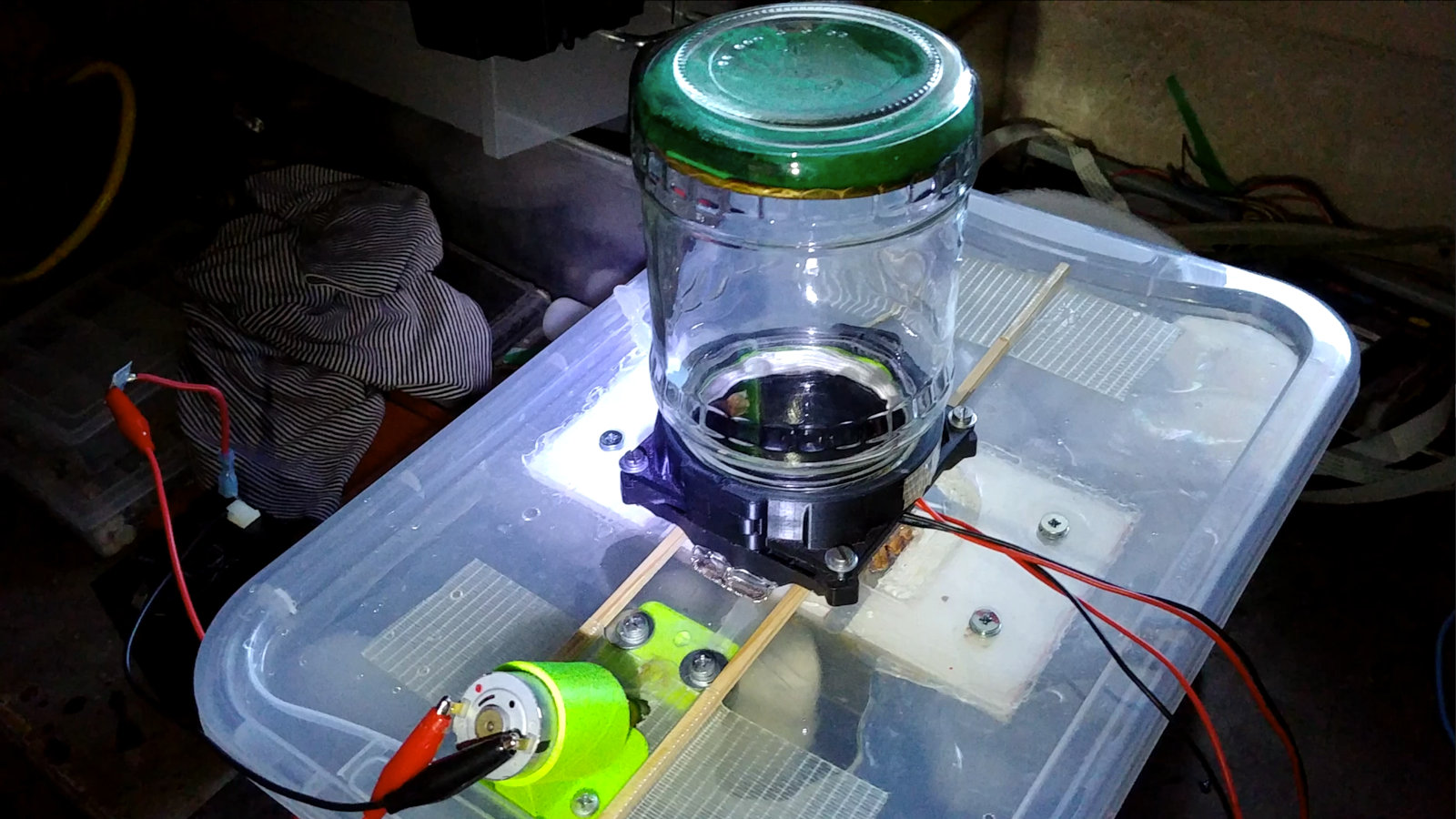
Fully assembled and working Cloudy with Particles cloud chamber
As you can see the setup was very crude. On top it featured an old pickle jar as the main chamber, selected because it was the only watertight glass box we had available. Inside was a piece of felt that slowly released isopropyl alcohol – the cheapest and most effective medium available. Using a 3D-printed bracket, the heat-conducting metal jar lid jar was mounted to a pair of cascaded Peltier modules (a TEC-12706 on top and a TEC-12710 on the bottom). Cascading helps to achieve lower temperatures but reduced the overall heat removal capacity. The entire assembly placed atop an old CPU cooler and submerged in an ice bath with actively circulating water. For the radiation source, we obtained some uranium ore (smolinec), which yielded very nice alpha and beta particle tracks. Its radioactivity was just large enough to see the tracks nicely but low to not cause any harm while handling it even for days on end.
Results
The trails were mesmerizing: thick lines for alpha particles and thin, sharp streaks for beta particles. While distinguishing finer details like positrons and electrons was not feasible due to the chamber's scale and a lack of constant electric field, the project succeeded in making particle physics tangible in my basement lab.
Building this chamber was not only an experiment in physics but also my first project involving sub-zero temperatures, as well as my initial experience with using CAD and 3D printing for prototyping.
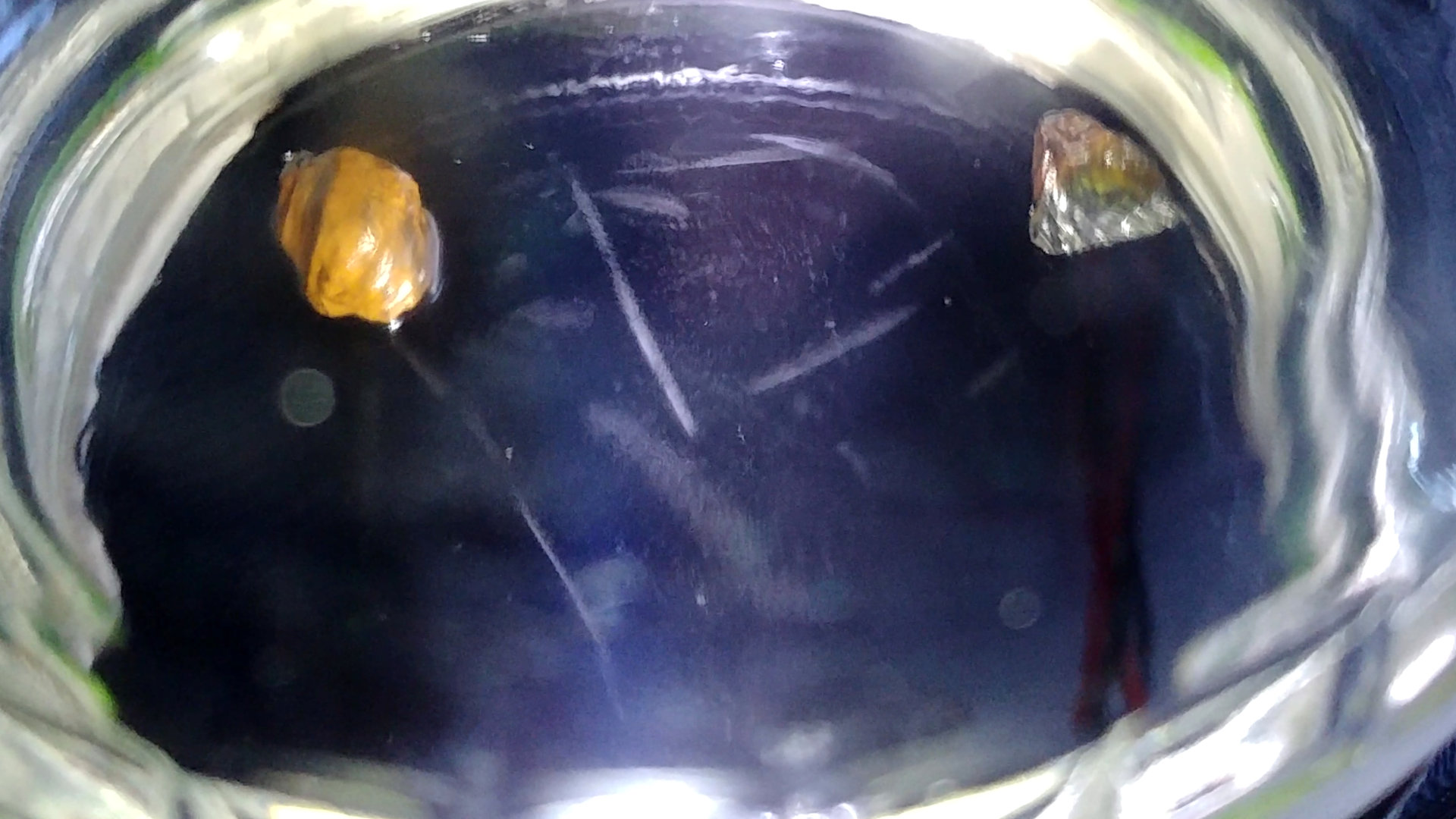
A photo of the Cloudy with Particles cloud chamber, showing the particle trails
Cloudy with Particles cloud chamber in action, thick trails are alpha particles, thin ones are beta particles (electrons)
